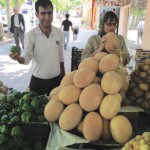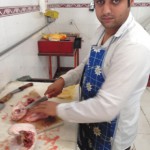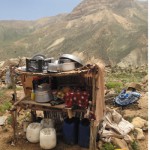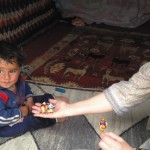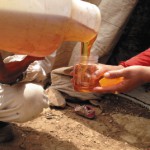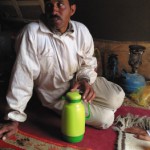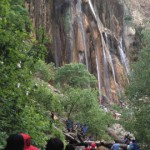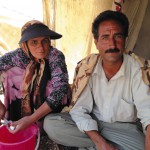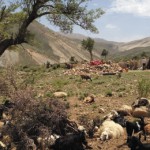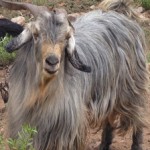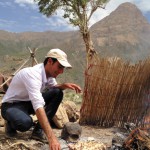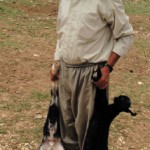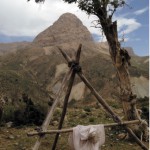The jewels of our trips are always visits of First Nations, as Canadians call them, to stay politically correct. The arrangements for such visits are demanding and complicated. The last thing we want to do is join a crowd of tourists surrounding a bunch of locals in colorful dresses, designed by tribal stylists, dancing around the fire. After such performance you are taken by a minibus fifty yard away to a twenty story hotel, get stuffed with a 5-course French cuisine dinner, and in the morning you pay $400 for the night you spent there and you are immediately whisked to the airport to fly to another attraction.
To avoid such fate requires a lot of leg work and mom is the right person to do it. A few months of pre-trip preparation were filled by reading and unsuccessful attempts to contact locals in Iran, potentially knowledgable about different nomadic groups of Iran and their movements during our stay there. It included also infinite number of talks, meetings and e-mails with Iranian diaspora in the United States. Every promising lead was sooner or later extinguished and the search continued until late evening yesterday when a car with knowledgable driver, unfortunately nonEnglish speaker, was confirmed to pick us up at 8:30am in the morning. We persuaded our Iranian host to join us for the day trip since she had never been there in the hopes she could translate on the way.
During a two hour drive to the area of Nomadi Land we discovered to our pleasant surprise that our young driver/guide is not just a 30-year old tribal offspring relocated to the City of Shiraz BUT also a guy with a decent command of English, teaching at a local language school . His roots in the area of Sepidan came handy as we strolled the tree-lined streets of this mountain town in search of offerings we wanted to present to our driver’s relatives he hoped to find after their recent relocation from the winter season spent with their goats and sheep on the Persian Gulf to their summer grounds in the wild mountains north of Shiraz. And what offerings did we acquire in Sepidan? Mostly the elements missing from the Qashqai tribe menu. Vegetables, fresh herbs and fruit for everybody, chicken from the butcher store ready for barbecuing, sweets for children (we shouldn’t, but we did) and some attractive items for women.(black gloves with diamond decor.
Off road search leads us to the area under the Ronch Mountain, Iranian Matterhorn. And we are lucky to find a small family of our driver’s distant cousin settled with his goats, chickens, a dog and beehives just on the slopes facing „Matterhorn“. In their family tent shared with an egg laying hen, their one year old son looks fearfully at us, his mistrust quickly broken by a fistful of candy from mom’s hands. The couple is young and handsome, specially the guy, who uncannily reminds us of the famous National Geographic cover photo of the Afgani girl with green eyes. We are being told that each family owns its piece of land where they spent the whole summer season.
During our short stop before moving on to find his less distant cousin we got a chance to see the production and taste of honey delivered directly from the beehive. If you want to buy a glass of the liquid sunshine be advised it costs 200,000 rials, a price almost astronomical for regular Iranians.
After having tea we moved to our guide’s other cousin whom we clearly woke up in the middle of a nice siesta nap with his wife in the open tent with floor covered by rugs.
Iran is one of those rare countries, if you travel there on your own, your chances of meeting other western tourists, are close to none. And if you put some efforts into your planing you are a happy camper getting a Big Bang for your buck. As an afterthought we visited one site popular with locals, Margoon Waterfalls. It was very attractive place we shared with hundreds of locals picnicking along the river galloping down from the falls. I am glad we saw it, but I hope we will manage to discover more people and places like we did in Nomadi Land of the Zagros Mountains.

